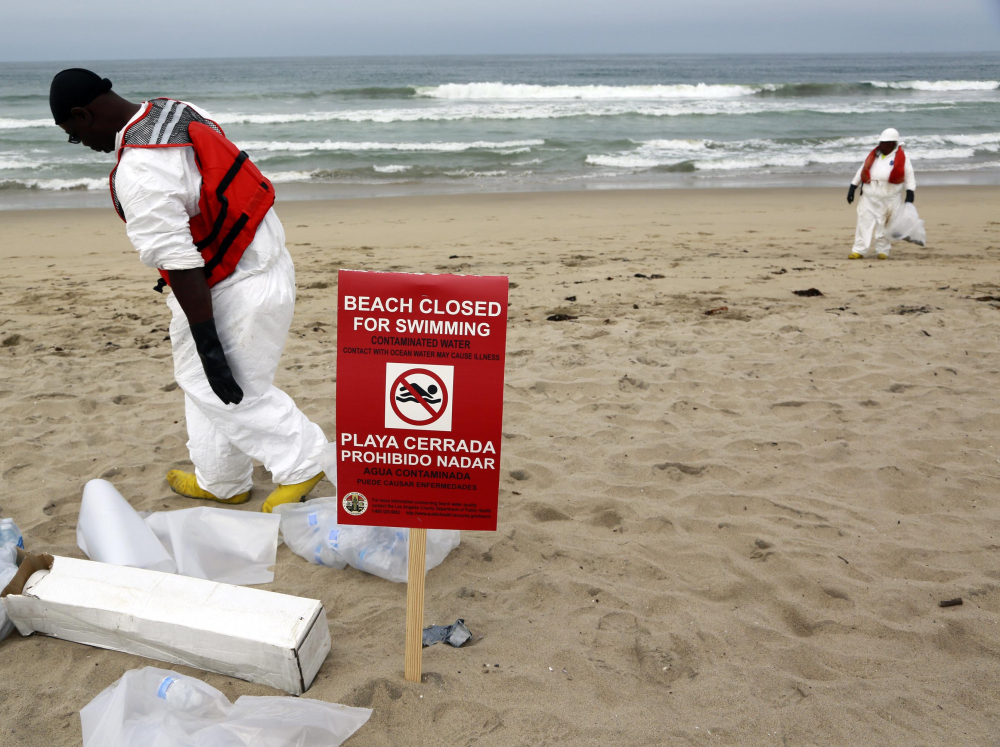MANHATTAN BEACH, Calif. — A 7-mile stretch of Southern California coastline where globs of oily goo washed ashore will remain closed until officials determine the water is safe for swimmers and surfers, authorities said Friday.
The popular beaches on Santa Monica Bay will stay shut down indefinitely as crews collect the remaining tar balls and tar patties that began washing up Wednesday, U.S. Coast Guard spokesman Michael Anderson said.
“This is just us being thorough,” he said. “Most of the tar balls are cleaned up but we want to make sure we get them all.”
Workers scooped up truckloads – about 30 cubic yards – of sandy goo along the shoreline from Manhattan Beach to Redondo Beach, and the mess seemed to have mostly dissipated by Friday.
Anderson estimated that about 90 percent of the material had been removed.
Coast Guard and state officials said samples of tar and water would be analyzed to identify where the material originated, but it could take days to get the results.
There is a refinery and offshore oil tanker terminal nearby but the Coast Guard did not find a sheen from a possible spill after the tar started to accumulate. There is also a major shipping channel in the area.
Nothing has been ruled out, including last week’s oil spill that dumped thousands of gallons of crude along the Santa Barbara County coast about 100 miles to the northwest. Two beaches there remain closed.
The environmentalist group Heal The Bay worried that the Los Angeles-area shoreline might reopen too soon.
“From a human health perspective, exposure through skin contact is a concern,” the group said in a statement.
Someone dropped off an oil-covered loon at a wildlife center in Manhattan Beach, but it’s not clear exactly where the bird or the oil came from, the Coast Guard said. No other wildlife issues have been reported. The loon is expected to recover and be released back into the wild.
Lifeguards chased a handful of surfers out of the water Thursday at Manhattan Beach, but beach life was otherwise normal. Beachgoers are used to stepping on small tar balls from natural seafloor seepage, but the amount that came ashore this week was highly unusual.
Send questions/comments to the editors.



Success. Please wait for the page to reload. If the page does not reload within 5 seconds, please refresh the page.
Enter your email and password to access comments.
Hi, to comment on stories you must . This profile is in addition to your subscription and website login.
Already have a commenting profile? .
Invalid username/password.
Please check your email to confirm and complete your registration.
Only subscribers are eligible to post comments. Please subscribe or login first for digital access. Here’s why.
Use the form below to reset your password. When you've submitted your account email, we will send an email with a reset code.